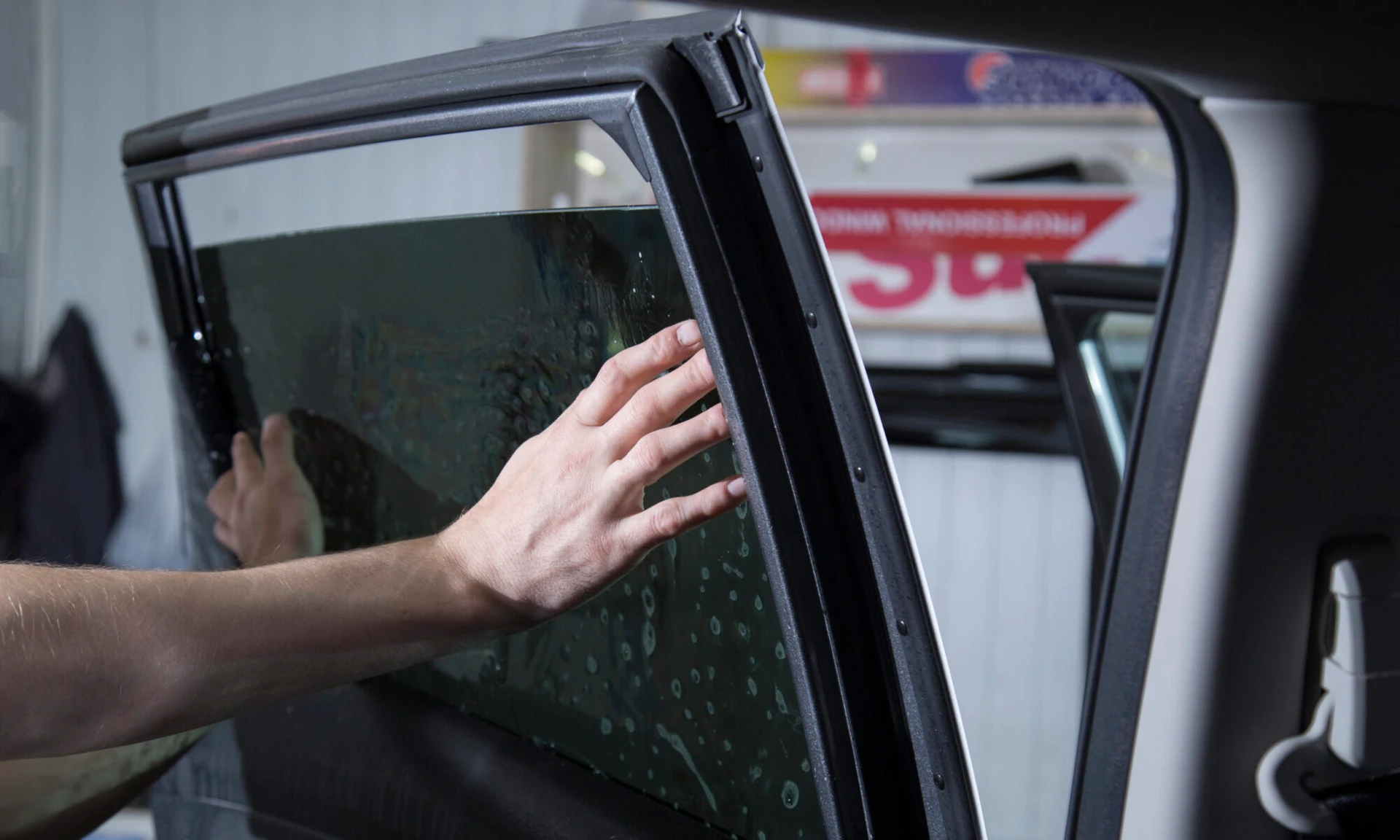The Best Window Tinting Alternatives for UV Protection and Warm Reduction
Wiki Article
The Process of Professional Window Tinting Explained
From selecting the right movie kind to the precise prep work of windows, each action plays an essential function in achieving a perfect application. Complying with these first preparations, the mindful cutting and application of the movie demand precision to avoid imperfections.Selecting the Right Window Movie
The preliminary factor to consider is the kind of movie, which can vary from dyed, metalized, to ceramic movies (window tinting). Colored movies mostly give personal privacy and visual enhancement, while metalized movies reflect heat and UV rays, enhancing energy effectiveness.Next, take into consideration the film's Visible Light Transmission (VLT) portion, which identifies exactly how much light goes into the area. A lower VLT gives better personal privacy and warmth denial yet might minimize all-natural light dramatically. Additionally, the movie's solar warmth gain coefficient (SHGC) is critical; a reduced SHGC suggests better thermal efficiency, aiding to keep indoor convenience.

Preparing the Windows
When the appropriate home window movie has been selected, the next action is extensively preparing the windows for installation. This prep work is essential for achieving optimal attachment and making sure a remarkable appearance post-installation.The initial task entails cleaning the home windows meticulously (window tinting). A premium glass cleaner is essential, ideally one that is ammonia-free to avoid harmful any window seals or color materials. Making use of a lint-free fabric or paper towels, technicians must remove any kind of dirt, dirt, or grease, paying special focus to the edges and edges where particles frequently accumulates

Cutting the Film
A specific strategy to reducing the film is necessary for guaranteeing a perfect fit on the ready home windows. This action needs both ability and interest to detail, as inaccuracies can bring about undesirable spaces or overlaps that concession the aesthetic and practical qualities of the color.Before reducing, the professional must gauge the window measurements accurately, making up any type of one-of-a-kind shapes or shapes. It is suggested to use high-quality window film, as this product tends to be much more flexible throughout the reducing process. The film is typically laid flat on a tidy, smooth surface area, and a sharp energy knife is utilized to ensure tidy sides.
To achieve ideal outcomes, several professionals utilize templates produced from previous installments or use software application to make specific patterns. A common technique entails adding an additional margin to the theme, enabling changes during the application stage.
Moreover, reducing the movie in a regulated setting minimizes the risk of contaminants affecting the adhesive side. By adhering to these careful methods, home window tinting experts can make sure that the movie not just fits seamlessly but also carries out efficiently in time, enhancing both appearance and functionality.
Applying the Tint
After meticulously cutting the movie to the proper measurements, the following step includes applying the tint to the home window surface area. This process begins with guaranteeing that the window is tidy and devoid of any kind of dust, debris, or deposits that can influence bond. A specific cleaning option is commonly used, adhered to by detailed drying out with a lint-free fabric.When the surface is prepared, the installer will very carefully position the color film against the glass. It is important to straighten the movie precisely to avoid misplacement, as any kind of errors can result in an amateur appearance. To facilitate this, the installer might make use of a anonymous light haze of application option on the adhesive side of the movie, permitting slight repositioning if necessary.
Making use of a squeegee, the installer will certainly after that begin to push the movie onto the glass, functioning from the facility outwards to get rid of air bubbles and make sure a company bond. This method is essential, as it guarantees a smooth and remarkable finish. Throughout the application, focus to detail is essential to avoid folds or imperfections, ensuring that the color not only improves visual appeals yet pop over to these guys also supplies the wanted functionality.
Last Evaluation and Treatment
The last inspection is an essential action in the window tinting procedure, making sure that the installment meets both aesthetic and practical criteria. Throughout this phase, professionals diligently examine the set up color for any kind of blemishes, such as bubbles, creases, or misalignments. An extensive evaluation also includes inspecting the adherence of the movie to the glass, along with its harmony and total look.After the evaluation, correct treatment and upkeep guidelines are provided to the client. It is important to notify them concerning the recommended timeline for cleaning the tinted windows, generally recommending a wait of a minimum of one month after installment to permit the sticky to treat completely. Customers must be informed on appropriate cleaning products and techniques, emphasizing the evasion of ammonia-based cleansers that can harm the color.
Additionally, specialists ought to suggest consumers on the relevance of normal maintenance to prolong the life of the tint. This includes routine look for indications of wear or damage and like this reacting promptly to any kind of issues. By guaranteeing an extensive last evaluation and giving clear treatment standards, home window tinting specialists improve customer complete satisfaction and the longevity of their work.
Conclusion
The professional window tinting procedure encompasses numerous important steps that make sure high-quality results. Picking the appropriate film type, preparing the home windows thoroughly, accurately cutting the film, and using it with accuracy are important for achieving a remarkable finish.Report this wiki page